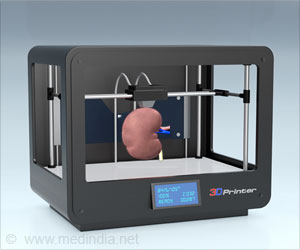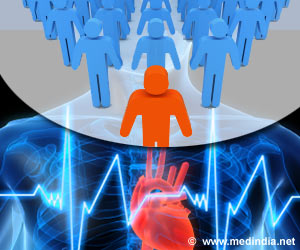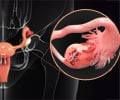Bioprosthetic ovary produced by 3D printing can restore fertility and allow birth of healthy offspring, finds study.
- Women who have survived childhood cancer or undergone treatment as adults for cancer may suffer from infertility and defective hormone production due to loss of ovarian function.
- Novel tissue engineering using 3D printed ovary helps restore fertility and hormone production in such women.
Although this study was done in mice, the implant was developed keeping in mind future human applications.
"What happens with some of our cancer patients is that their ovaries don't function at a high enough level and they need to use hormone replacement therapies in order to trigger puberty," said Monica Laronda, co-lead author of this research and a former post-doctoral fellow in the Woodruff lab.
"The purpose of this scaffold is to recapitulate how an ovary would function. We're thinking big picture, meaning every stage of the girl's life, so puberty through adulthood to a natural menopause."
It is also estimated that about 1.5 million in the US alone are infertile and nearly a quarter of them have impaired ovarian function.
How Did The 3D Printed Ovary Restore Fertility And Hormone Production?
- For their research, the team used mice whose ovaries had been removed.
- The 3D printed ovary scaffold was made of gelatin, a hydrogel obtained by breakdown of collagen, and therefore safe for human use.
- The key to the scaffold material was that it had to be strong enough to withstand surgical handling and implantation without collapsing, yet be porous enough to interact with the body tissuesof the mice.
- After a lot of trial and error, the
team w able to find the correct
temperature at which the gelatin managed to hold itself without
crumbling and permitted addition of multiple layers.
- The geometrical structure of the scaffold was crucial in
determining whether it would be able to support the growth of the immature
ovum and the surrounding hormone producing cells. Achieving the desired geometry would not have been possible
without the 3D printer technology.
Ramille Shah, assistant professor of materials science and engineering at McCormick and of surgery at Feinberg, pointed out that what set this research apart from other labs was the architecture of the scaffold and the material, or "ink," the scientists were using. - The 3D prosthetic ovary was surgically implanted into mice.
- Following the implant, the mice were able to ovulate, and to
the utter delight of the scientists they gave birth to healthy babies and were even able to nurse them.
"This research shows these bioprosthetic ovaries have long-term, durable function," said Teresa K. Woodruff, a reproductive scientist and director of the Women's Health Research Institute at Feinberg. "Using bioengineering, instead of transplanting from a cadaver, to create organ structures that function and restore the health of that tissue for that person is the holy grail of bioengineering for regenerative medicine.”
3D printing is done using filaments. By controlling the distance between the filaments and the angle between the various layers, it is possible to obtain different pore size and geometries.
The team likens the 3D generated ovary scaffold to that of the scaffolding surrounding a building which supports the structures within.
Similarly, the open structure and geometry of the 3D ovary scaffold are able to hold and support the immature egg cells of the mouse, permitting ovulation, organization of the hormone producing cells and also blood vessels to form that in turn allow the hormones to circulate in the mouse bloodstream and stimulate lactation following birth of offspring.
"Every organ has a skeleton," said Woodruff, who also is the Thomas J. Watkins Memorial Professor of Obstetrics and Gynecology and a member of the Robert H. Lurie Comprehensive Cancer Center of Northwestern University. "We learned what that ovary skeleton looked like and used it as model for the bioprosthetic ovary implant."
What are the Future possibilities of 3D Printed Ovaries?
The current study establishes the durability of the prosthetic ovary and marks a highly laudable achievement in the field of soft tissue regenerative medicine. Together with stem cell technology, it may be a potential therapeutic option and a life changer for several women with infertility and hormonal related issues.
Reference:
- Monica M. Laronda, Alexandra L. Rutz, Shuo Xiao, Kelly A. Whelan, Francesca E. Duncan, Eric W. Roth, Teresa K. Woodruff, Ramille N. Shah. A bioprosthetic ovary created using 3D printed microporous scaffolds restores ovarian function in sterilized mice. Nature Communications, 2017; 8: 15261 DOI: 10.1038/ncomms15261











